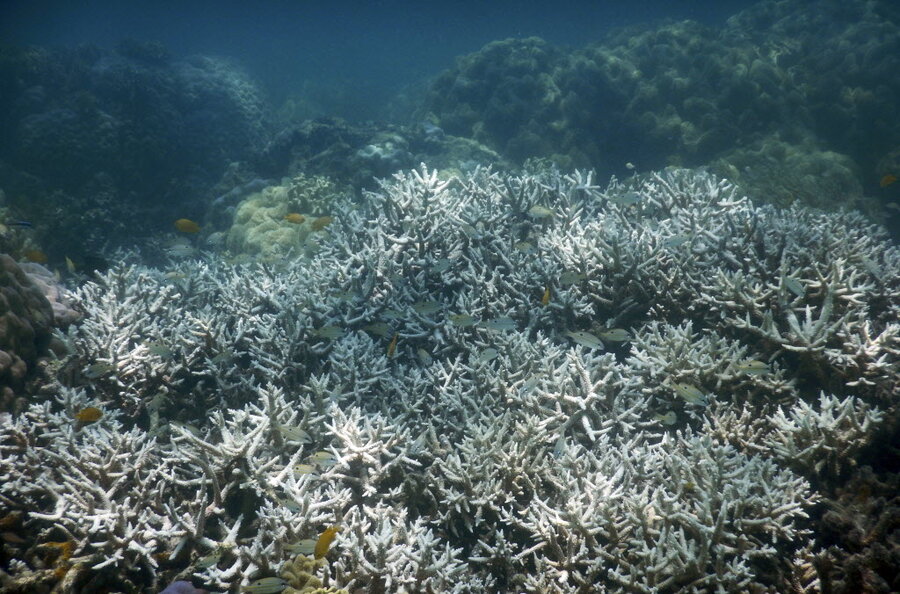Last chance! Visitors flock to see Great Barrier Reef before it vanishes.
Loading...
Art and culture lovers flock to Venice to take in the floating city's masterpieces before it sinks into the sea. Similarly, the Galápagos islands, the Maldives, and other natural wonders garner many visits from nature lovers looking to behold their beauty before they are gone.
Looking at this phenomenon of last-chance tourism, two researchers at the University of Queensland in Australia surveyed hundreds of tourists visiting the Great Barrier reef last year. They found that 69 percent of them cited wanting to see the natural wonder before it was gone as a motivating factor in their decisions to visit. The boost in tourism can bring immediate attention to the plight of the reef but may also exacerbate the problem in the long run, the researchers found.
"There's a vicious cycle at play here: tourists travel to see a destination before it disappears, but in so doing they contribute to its demise, either directly through on-site pressures or, in the case of climate-threatened sites such as the GBR, through greenhouse gas emissions," stated an author of the study in The Conversation.
The survey the researchers gave to 235 tourists in Port Douglas, Cairns, and Airlie Beach gave 15 suggested reasons for visiting the reef, including "to see the reef before it is gone," "to discover new places and things," and "to get away from the demands of everyday life." Respondents then rated their motivations for visiting on a scale from "not at all" to "extremely."
More than any of the other reasons for visiting the GBR, 69 percent of those surveyed were either "very" or "extremely" motivated by seeing the reef before it was gone.
The survey was conducted in 2015, before the mass bleaching earlier this year that hurt or killed 35 percent of coral in the northern and central parts of the reef and subsequent media attention that likely drove an even larger wave of last-chance tourism in 2016.
Coral bleaching occurs when water temperatures remain warm for too long, causing corals to expel the symbiotic zooxanthellae algae, and without the algae in their tissues, the corals turn white. While bleached coral can recover when the temperature drops, they will die if the water stays too warm.
The most recent round of coral bleaching was exacerbated by the 2015-16 El Niño season but has likely has more to do with climate change.
"It is fair to say we were all caught by surprise," James Cook University professor Terry Hughes told The Sydney Morning Herald. "It's a huge wake up call because we all thought that coral bleaching was something that happened in the Pacific or the Caribbean which are closer to the epicenter of El Niño events."
The researchers came to the conclusion that while bleaching encourages an uptick in tourism that may be beneficial to conservation efforts in the short term, in the long term it will cause more harm than good.
But not everyone agrees.
Australia removed the Great Barrier Reef from a United Nations climate report because of concern that the reef's endangered status would hurt tourism, but GBR tourism added $4 billion to the Australian economy in 2012.
"Some tourists do cause limited physical damage, but this pales in comparison to what's done by cyclones, bleaching, and crown-of-thorns starfish," Peter Mumby, reef scientist, told Motherboard. "The greater the value of Great Barrier Reef tourism, the easier it is to justify government investment in reef management."








